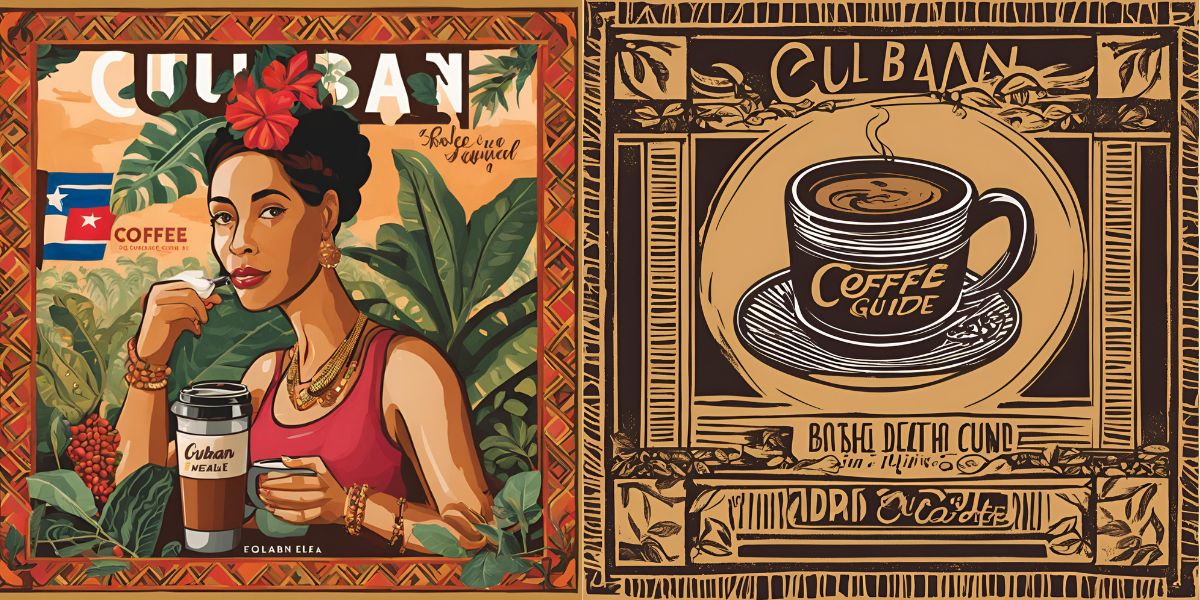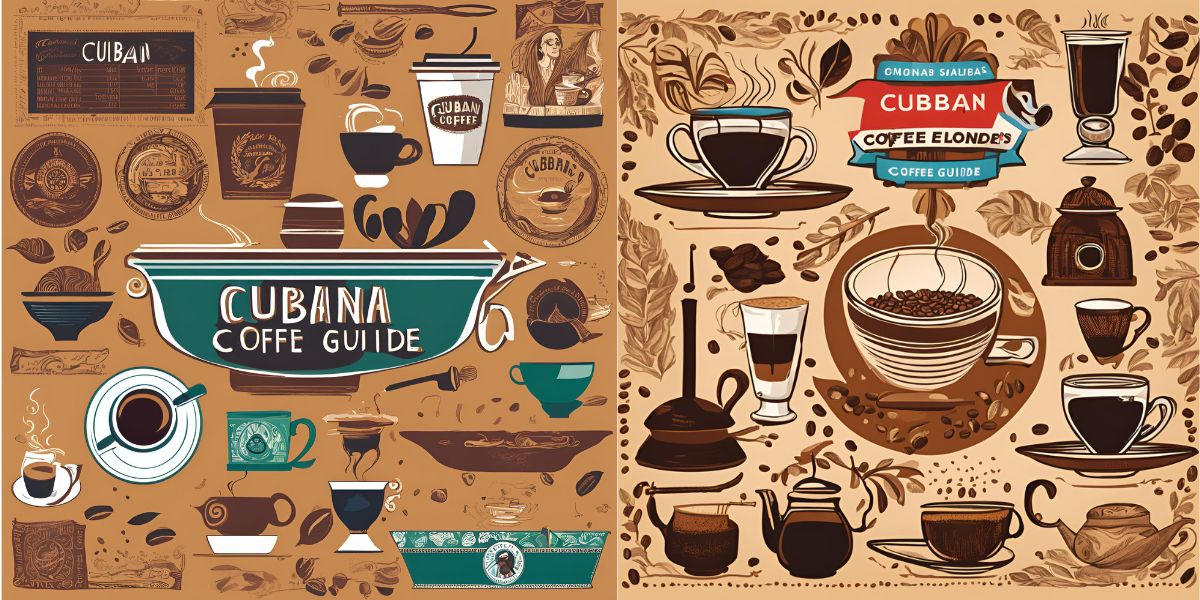Cuban coffee, or Café Cubano, is a strong and delicious espresso drink. It is a significant part of Cuban culture. This coffee is made with strong coffee, usually brewed in an espresso maker or a moka pot.
It is sweetened with demerara sugar, which gives it a nice mix of caffeine and sweetness. The special way of making it involves mixing sugar with the first drops of espresso.
This creates a lovely crema, making it even more delicious. In this blog, we will look at the Cuban coffee guide and learn interesting facts about it.
How do you make Cuban coffee? Make coffee with a moka pot or an espresso machine with finely ground espresso. For a single serving, mix a small amount of sugar with the first few drops of brewed coffee. This will create the traditional “espuma.” Then, mix this with the rest of the coffee as per the Cuban coffee guide.
Cuban Coffee Guide: Brief Description
Cuban coffee is rich and bold, made with finely ground coffee beans. To brew it, you’ll need a special coffee pot called a “cafetera” or a “Moka pot.” The coffee is brewed strong and sweetened with sugar during the brewing process.
Cuban coffee is often enjoyed as a small, powerful shot, called “cafecito.” It’s a big part of Cuban culture and a must-try for anyone who loves strong, flavorful coffee.
Cuban Coffee Types
Café Cubano is the most popular, but other kinds of Cuban coffee can please different taste buds. Every variety offers a unique twist to the classic formula.
The term “little cut” (cortadito) refers to the addition of a tiny amount of steaming milk to the traditional Café Cubano.
This makes it smoother and less strong while keeping the sweet taste. On the other hand, Café con Leche, or “coffee with milk,” offers a milder coffee experience.
In this version, a shot of Café Cubano is served with a cup of hot milk. You can change the coffee and milk ratio to suit your liking. This way, you can make it as rich or strong as you want.
These different types of Cuban coffee show the varied tastes in Cuban culture and give coffee lovers many options to try.
Cuban Coffee History
Coffee culture in Cuba is an important part of its history. Coffee first came to Cuba in the 18th century when Spanish colonists introduced it. Rich soil and ideal weather on the island made it an ideal place to cultivate coffee. This led to a strong coffee industry.
Cuban espresso became popular in the early 20th century. This was when many Italian immigrants arrived. They shared their espresso-making skills and traditions.
This mix of Italian techniques and Cuban love for strong, rich coffee created the beloved Café Cubano we enjoy today.
As time passed, Café Cubano became more than just a drink. It turned into a symbol of Cuban identity and a reflection of the country’s vibrant culture.
Cuban Coffee Tradition
Traditional Cuban coffee is more than just a drink. It has a strong smell and rich taste. In Cuba, it is a part of daily life. People enjoy it in the morning to wake up.
They also share it with friends and family during the day. Cuban coffee is essential for social relations.
Cuban coffee is served and enjoyed, demonstrating the significance of connection and community in Cuban culture.
Sharing a “cafecito” usually comes with fun talk and laughter. This helps create strong connections and a sense of belonging among people.
The process of making traditional Cuban coffee starts with carefully picking coffee beans. Local farms are frequently the source of these beans.
The brewing method is also important. The right amount of sugar is added to the coffee. Every step is a sign of the Cuban people’s love for quality and tradition.
Cuban Coffee Instructions
For those who want to make Cuban coffee at home, here is a simple guide for brewing a great cup. First, choose high-quality, finely ground coffee. It’s best to use coffee from Cuba.
Make sure the grounds are fine, but not too powdery for the best taste. You also need a moka pot, which is a stovetop pot that makes strong coffee like espresso.
When you have your coffee and moka pot, fill the bottom part of the moka pot with water until it reaches the valve. Next, add the ground coffee to the filter basket.
Level it off, but do not press down. Next, firmly screw the pot’s top onto the filter basket. Now, put the pot on the stove and turn the heat to medium.
As the water heats up, it will move through the coffee grounds and create a rich and fragrant coffee in the top part. Put a teaspoon or two of brown sugar into a small cup and let it sit while the coffee boils.
When the coffee starts to flow into the top, pour a small amount into your cup with the sugar. Whisk it quickly until a thick and creamy foam appears. Once all your coffee has been brewed, pour it into the cup and stir gently to mix the foam with the coffee.

Cultural Significance Of Cuban Coffee
Cuban espresso is very important in shaping the lively coffee culture in Cuba. It is more than just a drink; it is part of everyday life and social connections.
Whether it is a casual get-together with friends or a formal meeting, serving a small, sweet cup of Cuban espresso, or “cafecito,” shows kindness and respect.
Throughout the day, people from all backgrounds in Cuba take a moment for “la pausa del café.” This is a time to connect, talk, and enjoy the rich taste of Café Cubano.
This tradition has been passed down through generations, making it a key part of their culture. Making, sharing, and enjoying Cuban espresso helps strengthen bonds, showing how important social connections are in Cuban life.
History Of Cuban Coffee And Its Journey To Becoming A Beloved Beverage
The story of Cuban coffee is connected to the country’s interesting past. This past has its good and bad times that helped create its special taste. Spanish colonizers introduced coffee plants to the island during the 18th century.
The good soil and great weather in Cuba made it ideal for coffee farms. In the 19th century, coffee roasting became popular, making Cuba an important part of the global coffee trade.
But the Cuban Revolution in 1959 changed everything and coffee production went down. Despite these challenges, the people of Cuba still loved their coffee.
Many Cubans moved to the United States, bringing their coffee style with them. This introduced Cuban coffee’s unique flavors to new places, adding something new to the global coffee market.

Overview Of Popular Cuban Coffee Varieties Such As Café Cubano And Cortadito
Cuban Coffee: Different Types Like Café Cubano And Cortadito
Cuban coffee is a great way to enjoy real Cuban coffee. It is a big part of Cuban coffee culture. It tastes strong, sweet, and bold, showing the fun spirit of the island.
It is usually served in small cups, like espresso cups, giving a quick but strong caffeine kick. To make it, a strong espresso shot is brewed and mixed with a thick, sweet foam called “espuma.” This foam is made by quickly mixing sugar with the first drops of coffee.
In addition to Café Cubano, there are other popular types of Cuban coffee for different tastes. Cortadito is one option. It has a softer taste because it combines a shot of espresso with steamed milk, making it smoother.
Another favorite is Café con Leche. It has a shot of Cuban espresso with a cup of hot milk. This way, people can mix it to their liking. Trying these different types of Cuban coffee shows the variety in Cuban culture and can meet anyone’s coffee needs.
Traditional Brewing Methods For Authentic Cuban Coffee
For a real taste of Cuban coffee, you need to know the old ways of making it. An espresso machine can make good Cuban coffee, but many people like using a moka pot instead. It’s simple, cheap, and makes a strong coffee similar to traditional Cuban coffee. Cuban coffee culture heavily relies on this stovetop coffee maker.
When using a moka pot, start by putting finely ground espresso coffee in the filter basket. Then, add water to the bottom part. As the water heats up, it moves through the coffee grounds and makes a strong, tasty coffee that gathers in the top part.
A tiny quantity of the initial brewed coffee is combined with sugar to create the renowned Cuban coffee flavor. Whisk it well to create a thick, creamy foam called “espuma.”
Then add this foam to the rest of the coffee. Using traditional methods is important for a true Cuban coffee experience.
Ingredients Needed To Make A Perfect Cup Of Cuban Coffee
To brew a great cup of Cuban coffee, you need to start with good-quality ingredients that bring out its special taste. The coffee itself is the most crucial component. You’ll want finely ground coffee, preferably from Cuba, for that authentic flavor.
The beans should be roasted to a medium-dark level, giving you a rich and full taste that truly represents Cuban coffee.
Another key ingredient is brown sugar, which gives Cuban coffee its sweet flavor and smooth texture. Just add a small amount of brown sugar, usually demerara, to freshly brewed coffee.
Then whisk it really well until it becomes a thick and creamy foam known as “espuma” or “espumita.” This foam is what makes Cuban coffee stand out, adding sweetness and a velvety feel that distinguishes it from a regular espresso shot.

Step-By-Step Guide On How To Brew Café Cubano At Home
Brewing Café Cubano at home helps you enjoy the tasty flavors of Cuba whenever you want. Here’s a simple guide to making this favorite drink with a moka pot. First, fill the bottom part of the moka pot with water until it reaches the valve level.
Next, add finely ground espresso coffee to the filter basket. Make sure it spreads out evenly, but do not press it down.
Now, put the moka pot together and place it on medium heat. While the coffee brews, take a heat-safe mug and add a couple of spoonfuls of sugar. Once the coffee starts to flow into the top part, take the moka pot off the heat quickly.
Transfer a tiny quantity of the steaming coffee into the sugar-filled mug. Stir it well until the sugar disappears and a thick foam forms.
Finally, pour the rest of the brewed coffee into the mug, making sure to leave behind any grounds. Stir gently to mix it all. Now, your homemade Café Cubano is ready to enjoy.
Tips For Achieving The Perfect Balance Of Sweetness And Strength In Your Cortadito
To make a perfect Cortadito, you need to find a good balance between strong Cuban coffee and sweet milk. Start by brewing a shot of Cuban coffee.
You can use an espresso machine or a moka pot for this. While the coffee brews, take a small amount of milk. Whole milk is the classic choice, but you can try other types if you prefer.
Once the coffee is ready, take a small glass or cup and add one or two teaspoons of brown sugar to the bottom. Then, pour the shot of Cuban coffee over the sugar. Next, add the warm milk.
You can adjust the amount of milk to coffee based on your preference. Typically, the ratio is either 1:1 or 1:2. Gently stir everything together to mix well and melt the sugar.
Serving Suggestions And Traditional Accompaniments For Cuban Coffee
Traditionally, a little cup is used to serve Cuban coffee. This small cup is just right for enjoying the strong flavors. How it looks matters too. The dark coffee features a light layer of creamy foam.
This foam is very important for this popular drink. The smell of the coffee alone can wake up your senses and promise bold flavors.
Along with the coffee, having traditional sides can make it even better. A simple, yet tasty option is “tostada,” which is a slice of Cuban bread that is toasted and spread with butter.
The butter’s slight saltiness contrasts well with the coffee’s sweetness. Other tasty pairings include “pastelitos,” small Cuban pastries packed with fun flavors and textures.
How To Store And Preserve Your Cuban Coffee For Freshness
To keep your Cuban coffee tasting fresh and flavorful, it’s important to store your coffee beans correctly. Over time, the presence of oxygen, light, heat, and moisture can all degrade the quality of coffee.
Start with freshly roasted beans. They give you the best flavor. Use whole beans when you can. They have greater surface area after being ground, which allows air to enter and hastens to spoil.
Put your beans in an airtight container. It’s best if the container is dark and cool, away from direct sunlight and heat. Do not store coffee in the freezer or fridge.
These places can add moisture and other flavors to your beans. If you store them right, whole coffee beans can remain fresh for several weeks. Ground coffee is best consumed within a week or two for the best taste.

Exploring The Unique Flavor Profiles Of Cuban Coffee Beans
Cuban coffee beans are often grown in Cuba’s coffee farms, which are on rich volcanic soil. This makes them taste different from coffee beans from other places.
The flavor can change depending on things like the type of coffee, how high it is grown, what the soil is like, and how it is roasted.
A common type of bean used is the Robusta bean. This bean has a strong flavor and more caffeine than Arabica beans. Cuban coffee usually has a full body with bold flavors that can remind you of nuts, chocolate, and caramel.
The way the coffee is roasted also affects its taste. Typically, Cuban coffee is roasted to a medium-dark level, which gives it a rich flavor with a slightly smoky taste.
Pairing Suggestions To Enhance Your Cuban Coffee Experience
The strong flavor of Cuban coffee goes well with many different foods, both traditional and new. Each pairing adds something special to the enjoyment of Cuban coffee.
If you prefer your coffee cold, iced coffee made with Cuban espresso is a great choice. It maintains the rich flavors while providing a refreshing sip. To counterbalance the sweet and bitter flavors, pair it with vanilla ice cream or creamy flan.
The classic Cuban “cortadito” pairs well with guava pastries. This is a popular breakfast or brunch option in Cuba. If you enjoy organic coffee, try well-made Café Cubano with toasted Cuban bread and a touch of honey.
This combination of sweet, savory, and aromatic flavors will delight your taste buds and keep you coming back for more.
Where To Buy Authentic Cuban Coffee Beans And Products For Home Brewing
For those who want to make their own Cuban coffee, there are many ways to find the best coffee beans and equipment.
Specialty coffee shops usually offer a good selection of beans from different places, including Cuban coffee beans from trusted growers.
You can ask your local coffee roaster or look at online shops that focus on single-origin coffee for the freshest choices.
If you are in places with many Cuban people, like Little Havana in Miami, you can find authentic Cuban grocery stores or small stores that sell different Cuban coffee brands and brewing tools.
These stores often have well-known brands like Café La Llave, Café Bustelo, and Pilon Coffee, which are famous for their traditional Cuban coffee flavors.
Cuban restaurants that focus on Cuban food are also good places to buy Cuban coffee beans. Some of these restaurants might even have pre-ground coffee or single servings so you can taste the flavors before buying more.

FAQ About Cuban Coffee Guide
How Is Cuban Coffee Served?
Cuban coffee, called “cafecito,” is usually served in small cups known as “tacitas.” These espresso cups show off the dark color of the coffee and are just right for a few enjoyable sips. When serving a larger amount, called “una colada,” Cuban coffee often comes in a styrofoam cup. It is given with small plastic demitasse cups for sharing.
What Makes Cuban Coffee Different?
Cuban espresso stands out because of its special way of brewing. It starts by mixing sugar with the first few drops of coffee. This creates a sweet, frothy layer called “espuma.” The espresso uses strong coffee, usually made from Robusta beans. This gives the drink a rich and tasty flavor.
How Many Scoops Of Sugar For Cuban Coffee?
The choice of sugar in Cuban coffee is yours. A regular starting amount is 1-2 teaspoons for each cup. Many people like to use natural brown sugar, like demerara sugar. This sugar has a tasty molasses flavor and helps make a nice foam on top.
Do You Put Milk In Cuban Coffee?
Classic Cuban coffee does not have milk. However, “café con leche” is a widely used variant. This beverage comes with a cup of hot milk and a shot of Cuban espresso. This way, people can choose how much coffee and milk they want in their drink.
Final Thought
Cuban coffee tastes strong and has a rich history. It is a big part of Cuban culture. In the Cuban coffee guide, having a great coffee at a busy coffee kiosk in Little Havana is a unique experience.
Even making those flavors at home can bring you closer to Cuba. It’s recommended to drink your Café Cubano on an empty stomach before noon. This way, you can truly savor its rich flavors.





Leave a Reply